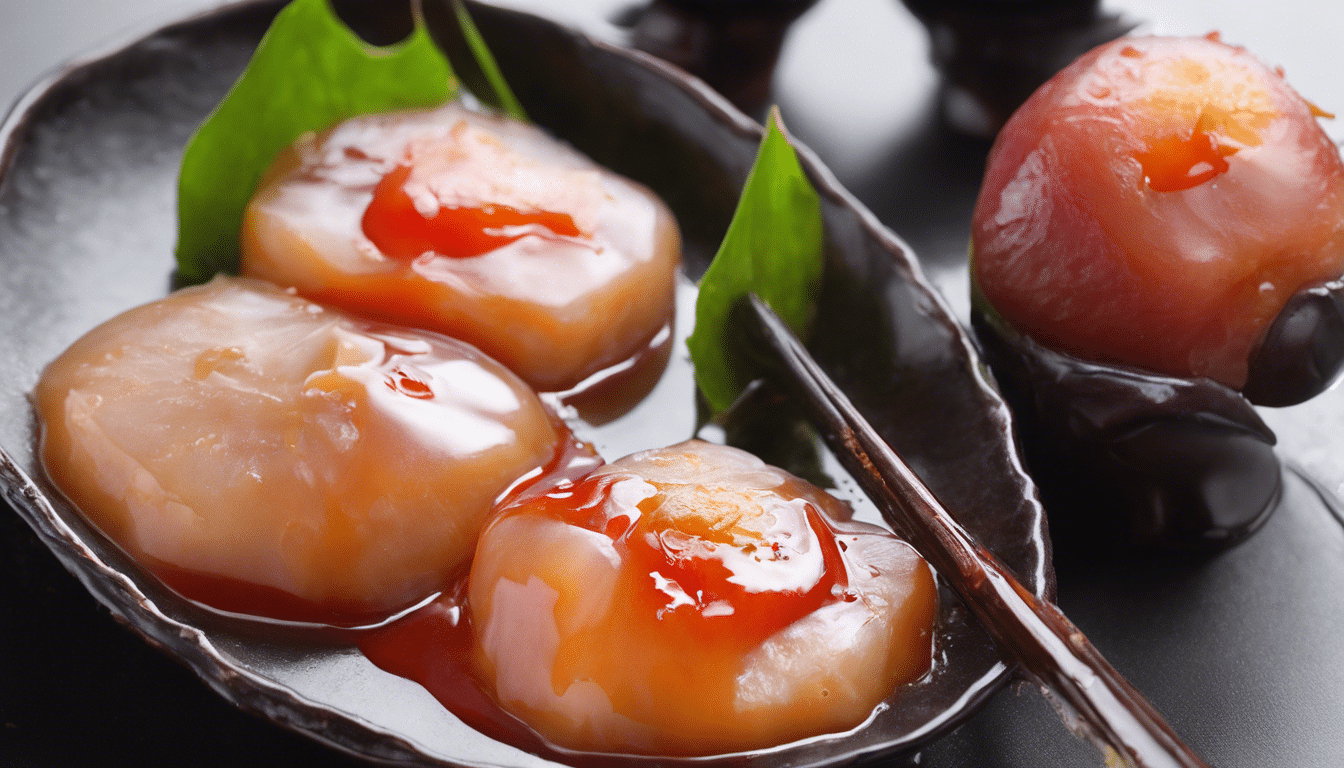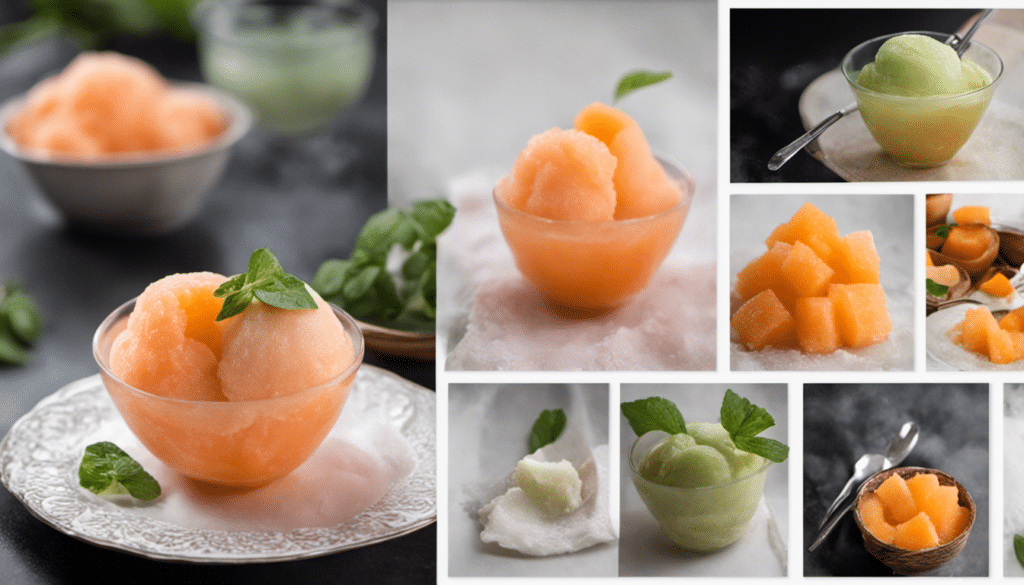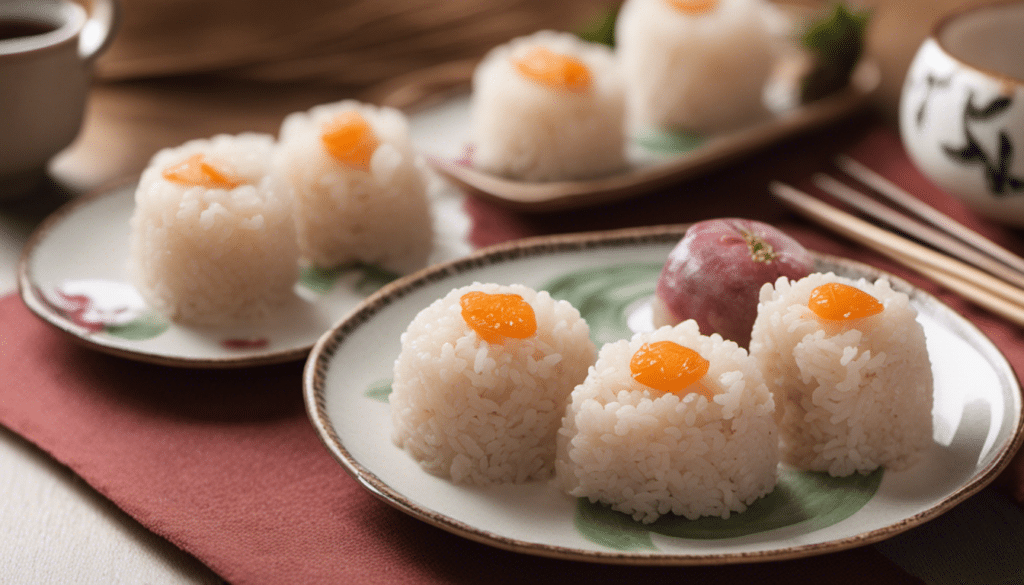| Prep: 15 mins | Cook: 30 mins | Difficulty: Easy | Serves: 6 |
| kcal | fat | saturates | carbs |
| 129 | 0g | 0g | 32g |
| sugars | fibre | protein | salt |
| 31g | 1g | 0g | 0.33g |
“`html
There’s something incredibly soothing about creating a versatile condiment from scratch, and Japanese Plum Sauce (Ume Sauce) has quickly become a cherished staple in my kitchen. Growing up on the Maine coast, my culinary world was filled with lobster rolls, clam chowder, and all manner of seafood delights. However, as I expanded my palate, I discovered the joy in exploring flavors from around the globe. From sushi to sashimi, Japanese cuisine has always fascinated me with its balance of sweet, salty, and umami elements. The Japanese Plum Sauce captures this harmony beautifully.
A Delicious Medley of Flavors
Japanese Plum Sauce (Ume Sauce) is a delightful mixture that combines the tartness of Japanese plums with the sweetness of sugar and the saltiness of soy sauce. The rice vinegar adds a nice tang, while sake provides depth. Grated ginger gives it a subtle warmth that ties all the flavors together. It’s a sauce that can liven up grilled meats, enhance a cold noodle salad, or even serve as a magnificent glaze for roasted vegetables.
The unique combination might remind some of the more familiar hoisin sauce or even teriyaki, but I can assure you that the complexity of Japanese Plum Sauce stands on its own. Its versatility in pairing with different dishes makes it a real gem in any culinary enthusiast’s collection.
Health Benefits of Japanese Plums
One of the reasons I adore this recipe so much is its use of Japanese plums, also known as ume. These little fruits are packed with antioxidants and are known for their health benefits, which include aiding digestion, boosting the immune system, and even helping to improve liver health. Paired with the beneficial properties of ginger, which is renowned for its anti-inflammatory and antioxidant effects, this sauce is not only a treat for your taste buds but also a boost for your overall well-being.
For those who might be new to Japanese ingredients, the use of sake and rice vinegar may seem exotic, but they are readily available at most grocery stores or online retailers. I even found that my local shop carries a surprising array of international goods, making it easier than ever to experiment with new flavors.
If you’re looking for a new way to elevate your dishes, I highly recommend trying this Japanese Plum Sauce. Not only is it an exploration of flavors, but it’s also a delightful nod to the possibilities of fusion cooking. Whether drizzled over grilled chicken or used as a tangy dip for spring rolls, it adds a distinct and irresistible dimension to your meals.
“`
What You’ll Need
- 2 cups Japanese plums (ume), pitted and chopped
- 1 cup sugar
- 1/2 cup rice vinegar
- 1/4 cup sake
- 1 tablespoon soy sauce
- 1 teaspoon grated ginger
- 1/2 teaspoon salt
“`
Method
“`html
Step One
Place the pitted and chopped Japanese plums (ume) into a medium-sized saucepan.
Step Two
Add the sugar, rice vinegar, sake, soy sauce, grated ginger, and salt to the saucepan with the plums.
Step Three
Mix the ingredients thoroughly to ensure that the sugar is evenly distributed.
Step Four
Place the saucepan over medium heat and bring the mixture to a boil, stirring occasionally.
Step Five
Once boiling, reduce the heat to low and let the mixture simmer for about 25-30 minutes, or until the plums break down and the sauce thickens to your desired consistency. Stir occasionally to prevent sticking.
Step Six
Remove the saucepan from heat and let the sauce cool slightly.
Step Seven
Using a blender or an immersion blender, puree the mixture until smooth.
Step Eight
Optionally, you can strain the sauce through a fine-mesh sieve to remove any remaining solids for an extra smooth texture.
Step Nine
Allow the Japanese Plum Sauce to cool completely before transferring it to a sterilized jar or container.
Step Ten
Store the sauce in the refrigerator for up to two weeks and enjoy it as a condiment with your favorite dishes.
“`




